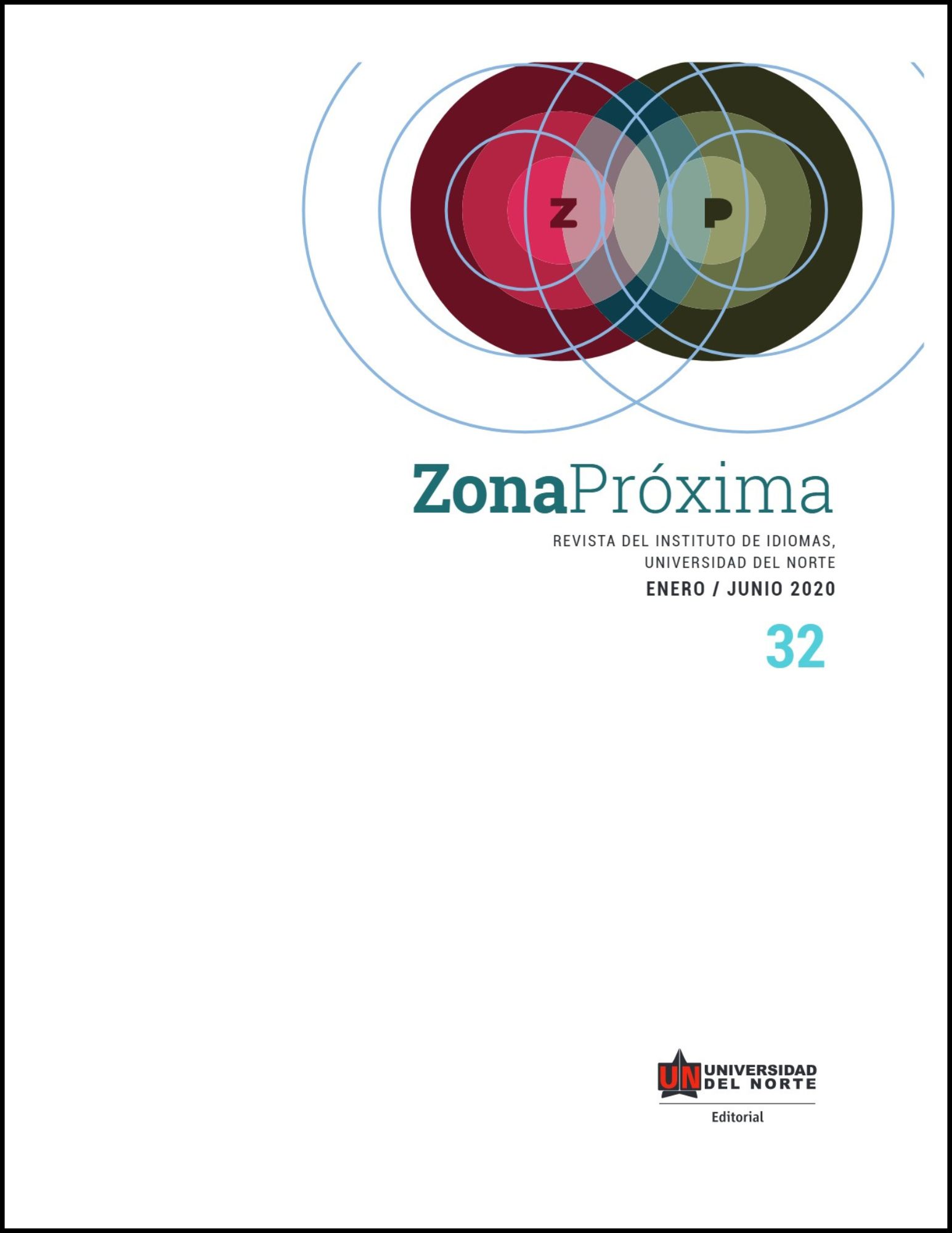Resumen
El proyecto de investigación en sentido estricto se realizó en la Universidad Autónoma de Bucaramanga (UNAB). La problemática en la escuela permite resaltar la necesidad de asumir que la tecnología ha modificado la forma de afrontar muchas disciplinas, pero no ha ocurrido un cambio radical en los métodos y los programas de enseñanza. El propósito planteado fue diseñar un videojuego como estrategia didáctica para potenciar la creatividad en niños en edad inicial. En el desarrollo del trabajo se empleó la investigación descriptiva, bajo un enfoque cualitativo. Para la elaboración del videojuego se realizaron los siguientes pasos: el desarrollo de la interfaz, la ubicación del menú que permita acceder al juego de forma directa o a las instrucciones a tener en cuenta para participar en él, la configuración de los controles (o joysticks), el diseño del mundo virtual en el que se desarrolló el videojuego, la selección del tiempo de duración del videojuego, la elaboración del procedimiento de interacción con el videojuego y las instrucciones. Todo esto llevó a plantear la pregunta: ¿De qué manera la interacción con videojuegos como estrategia didáctica fomenta la creatividad en niños en edad inicial? Entre los resultados se encuentran la revisión del estado del arte de instrumentos para evaluar el desarrollo de la creatividad en edad inicial, el diseño de videojuegos como estrategia didáctica que permita potenciar la creatividad en niños en edad inicial, la evaluación de videojuegos existentes en el medio a fin de identificar elementos diferenciadores con relación a su uso como estrategia didáctica, y la valoración de la viabilidad del videojuego diseñado en cuanto estrategia didáctica para potenciar la creatividad. Entre las conclusiones se menciona que los niños y jóvenes buscan más entretenimiento .
Citas
Alonso, M. (2010). Variables del aprendizaje significativo para el desarrollo de las competencias básicas. Recuperado de http://bit.ly/1W86riO
Begoña, G. (2000). La dimensión socioeducativa de los videojuegos. Edutec. Revista Electrónica de Tecnología Educativa, 12. Recuperado de http://edutec.rediris.es/Revelec2/Revelec12/gros.html
Briggs, J. & Peat, D. (1999). Las siete leyes del Caos. Las ventajas de la vida caótica. España: Grijalbo.
Burnett, C. y Figliotti, J. (2015). Tejiendo creatividad en cada hebra de su currículo (Karina Loera Bárcenas trad.). Búfalo, NY: Knowinnovation.
De la Torre, S. (2006a). Creatividad en la educación primaria. Una mirada desde la complejidad. En S. de la Torre y V. Violant (Coord.), Comprender y evaluar la creatividad, (vol. I., pp. 253-266). Málaga: Aljibe.
De la Torre, S. (2007b). Creatividad aplicada. Recursos para una formación creativa. Argentina: Magisterio del Río de la Plata.
Del Moral, P., Fernández, G. & Guzmán, D. (2015). Videojuegos incentivos multisensoriales poten-ciadores de las inteligencias múltiples en educación primaria. Electronic Journal of Research in Educational Psychology, 13(36).
Franco, C. & Alonso, J. (2011). Diferencias entre cuentos conocidos y desconocidos en la estimulación de la creatividad infantil. Revista Aula Abierta, 39(2), 113-122. ICE.
Flick, U. (2015). El diseño de la investigación cualitativa. Madrid: Morata. Recuperado de https://www.edmorata.es/libros/el-diseno-de-la-investigación-cualitativas/
Gómez, M. (2007). Modelos de enseñanza basada en casos: de los tutores inteligentes a los videojuegos (Tesis de doctorado). Universidad Complutense de Madrid, Madrid, España.
Green, G. & Kaufman, J. C. (2015). Video games and creativity. Amsterdam, Boston: Elsevier, Academic
Press. Doi: https://doi.org/10.1016/C2014-0-00065-2
Hernández, S., Fernández, C. & Baptista, L. (2010). Metodología de la investigación. (5a ed.). Perú: Mc-Graw Hill.
Justo, M. & Franco, J. (2008). Influencia de un programa de intervención psicomotriz sobre la creatividad motriz en niños de educación infantil. Bordón, 60, 107-121. Recuperado de file:///D:/macuna/Downloads/Dialnet-InfluenciaDeUnProgramaDeIntervencionPsicomotrizSob-2717068.pdf.
Klimenko, O. & Uribe, L. (Diciembre de 2010). Aula taller creativo como estrategia didáctica para la enseñanza preescolar. Revista Electrónica de Psicología Social «Poiésis», 20.
Lanza, E., D. (2012). Estrategias didácticas para el desarrollo de la creatividad en educación primaria. En V Congreso Mundial de Estilos de Aprendizaje, realizado en Santander el 27, 28 y 29 de junio de 2012. 28049. Recuperado de file:///D:/macuna/Downloads/Dialnet-EstrategiasDidacticasParaElDesarrolloDeLaCreativid-4640391.pdf
Marín, D, V. & Martín-Párraga, J. (2014). Can videogames be used to develop the infant stage educational curriculum? Journal of New Approaches in Educational Research, 3. Recuperado de http://naerjournal.ua.es/article/view/v3n1-3
OCDE (Organización para la Cooperación y el Desarrollo Económicos). (2015). Students, computers and learning: making the connection. París: OECD Publishing. Recuperado de http://www.oecd.org/publications/students-computers-and-learning-9789264239555-en.htm
Pérez, G. (2011) The educational potential of video games: the movies, a game that encourages creativity audiovisual. Eticanet, IX (10). Recuperado de http://www.ugr.es/~sevimeco/revistaeticanet/index.htm
Puche, N. R., Ossa O. J. y Guevara, G. M. (2005). La resolución de problemas. ¿Una alternativa integra-dora? Recuperado de http://bit.ly/1WyEyBd
Ramírez, C. A., Robayo, G., Sotaquirá, G. & Ricardo, J. (2011). Diseño de interacciones táctiles aplicadas a un juego de simulación educativo. Ingeniería Informática. Recuperado de http://bit.ly/1TSSxQ9
Romero, F. H. (2010). La creatividad lúdica en niños y niñas de 3 a 6 grado escolar de un centro educativo rural y uno urbano de Pereira. Universidad Tecnológica de Pereira. Recuperado de http://repositorio.utp.edu.co/dspace/bitstream/11059/1970/1/370118R763.pdf
Ruiz, G., S. (2010). Práctica educativa y creatividad en educación infantil (Tesis de doctorado). Málaga, España.
Stein, M., I. (1974). Stimulating creativity. New York, NY: Academic Press.
Unesco. (2016). Tecnologías digitales al servicio de la calidad educativa. Una propuesta de cambio centrada en el aprendizaje para todos. Chile.
Varela, F. (2006). Conocer. Barcelona: Gedisa.


